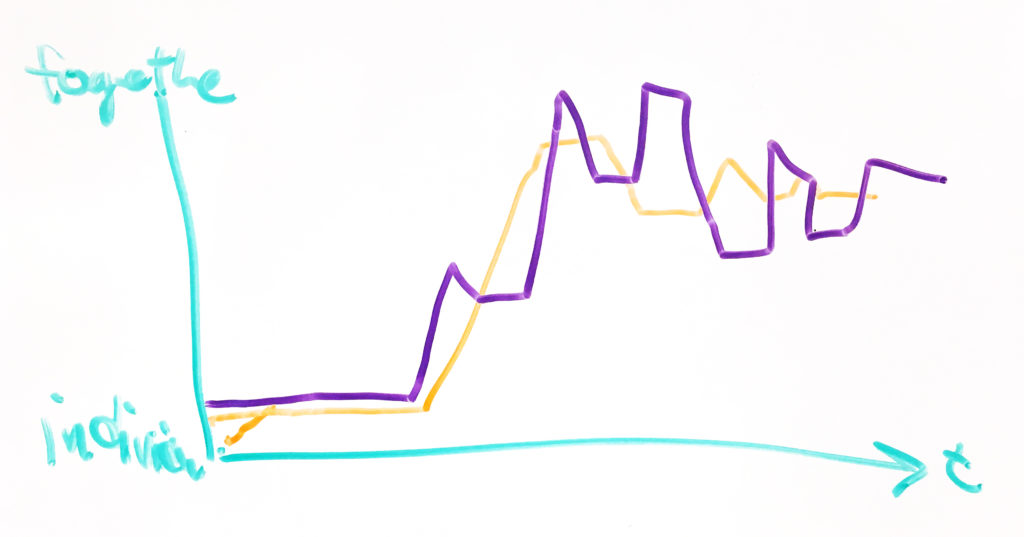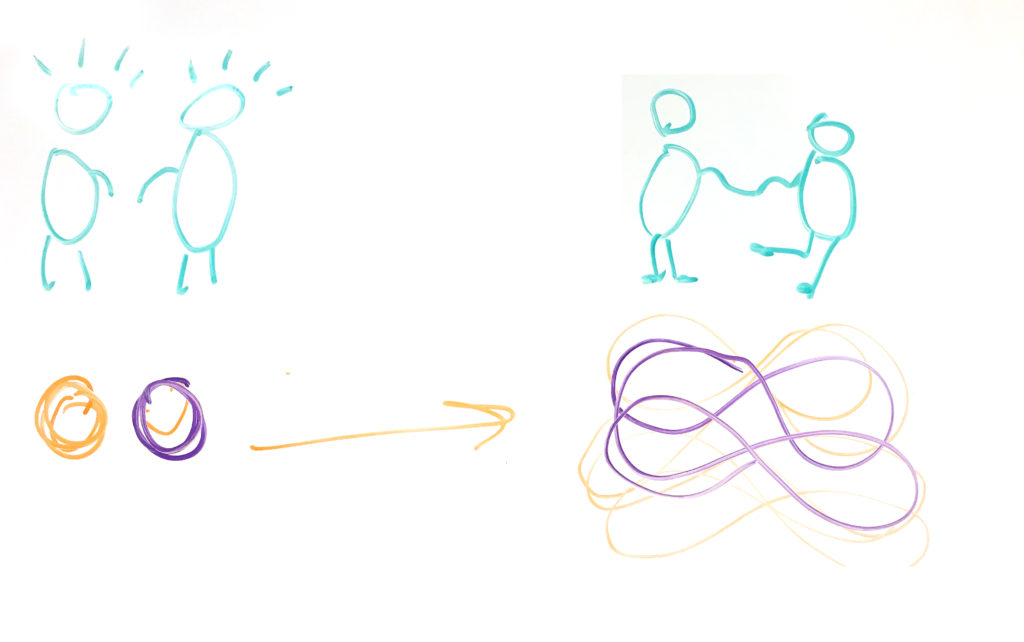When interacting with technology, who initiates the conversation – the machine or the person? Our project hoped to explore this question and present a study of technologically-mediated interaction between two people over time.

We hoped that two people would transition from individual and circular movement (each waving their limbs around to identify themselves on the screen) to recognizing that their individual movements were actually tied together, creating shared pathways.

Individual dots are drawn at the hands and feet of each person. Two independent bezier curves are contingently drawn between the inside hands and feet of the pair when they are within a certain distance of each other. When connected, each individual’s other hand and foot act as control handles for the bezier. Once the pair realizes that they can act together, their movements are much slower and deliberate in an attempt to manipulate the curves together. While not in perfect unison nor complete random, the pair are somewhat steering each other as they are digital tied together.